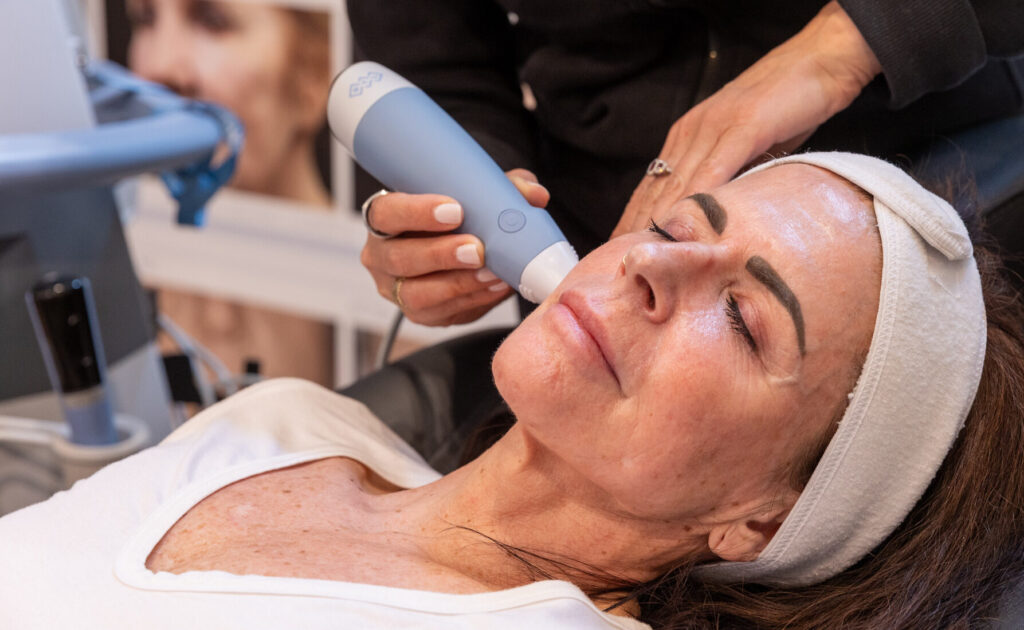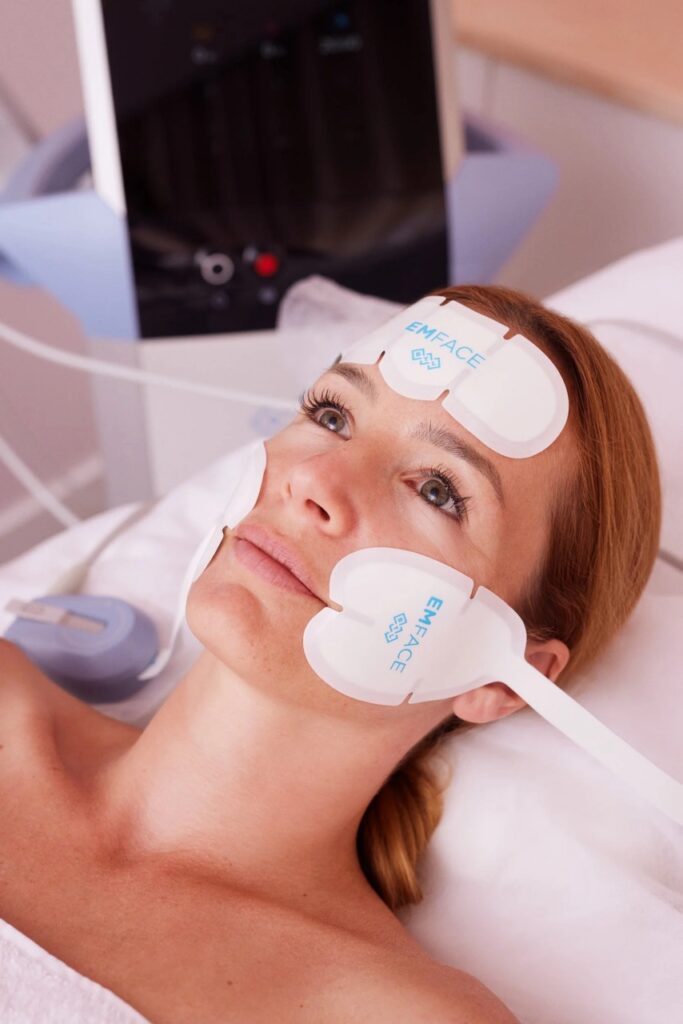
RF microneedling downtime typically ranges from 24 to 72 hours for most patients, though individual recovery varies based on treatment intensity, skin sensitivity, and the specific technology used. During this period, you’ll experience mild redness similar to a light sunburn, slight swelling, and temporary skin sensitivity. Advanced systems have evolved to minimize recovery time while maintaining excellent results, often allowing patients to return to normal activities within one to two days with proper aftercare.
What is RF microneedling downtime and why does it vary?
RF microneedling downtime refers to the recovery period when your skin shows visible effects from treatment, including redness, mild swelling, and sensitivity. Most patients experience these effects for 24 to 72 hours, though some may notice residual pinkness for up to a week. This recovery period is significantly shorter than more invasive procedures because radiofrequency microneedling creates controlled micro-injuries that trigger your skin’s natural healing response without extensive tissue damage.
Several factors influence your individual radiofrequency microneedling recovery time. Treatment intensity plays a major role—deeper needle penetration and higher energy settings naturally require more healing time. Your skin’s natural sensitivity and thickness also matter, as does the treatment area. Facial skin varies in thickness throughout different regions, with areas like the perioral region being more delicate than the forehead or neck.
Advanced technologies have transformed the microneedling healing time equation. Modern systems use precision-driven technology to optimize energy delivery, reducing unnecessary tissue stress while maintaining effectiveness. This means you get the collagen-stimulating benefits you’re seeking with less visible downtime than traditional methods required just a few years ago.
Understanding what ‘downtime’ actually means helps set realistic expectations. You’re not incapacitated or unable to function—rather, you’ll have temporary redness similar to mild sunburn, possible slight swelling, and skin that feels warm and tight. This differs dramatically from invasive procedures that might require weeks of recovery with significant bruising or restricted activities.
How do advanced RF microneedling systems reduce recovery time compared to traditional methods?
Advanced RF microneedling systems represent a significant advancement in minimizing recovery time through sophisticated technology design. Modern systems combine monopolar and bipolar radiofrequency delivery with precision-driven energy distribution, allowing for controlled targeting of treatment zones while preserving surrounding tissue. This selective approach means your skin experiences the therapeutic benefits without unnecessary trauma to adjacent areas, naturally accelerating the healing process.
Traditional RF microneedling typically requires 3 to 5 days of noticeable downtime, with redness and swelling being more pronounced. Advanced approaches often reduce this to 24 to 48 hours for most patients. The difference comes from fractional RF technology that creates precise thermal zones in the dermis, triggering collagen production and tissue remodeling whilst leaving healthy tissue intact to support faster recovery.
The ability to adjust depth and energy settings with precision matters significantly for RF microneedling side effects and recovery. Rather than applying uniform treatment that might be excessive for delicate areas or insufficient for thicker skin, Exion RF microneedling and similar advanced systems optimize delivery based on the specific treatment zone. This customization reduces inflammation and speeds healing whilst maintaining the effectiveness that produces visible results.
What makes modern RF microneedling particularly valuable is how it balances efficacy with comfort. The technology delivers sufficient thermal energy to stimulate substantial collagen increases without creating the extended inflammation that prolongs recovery. This represents a genuine evolution in radiofrequency microneedling, where patients no longer need to choose between results and convenience.
What should you expect during the first 48 hours after RF microneedling?
Immediately after your treatment, expect your skin to appear red and feel warm, similar to a mild sunburn. You’ll likely notice slight swelling, particularly if you’ve had treatment around the eyes or cheeks. Your skin may feel tight and sensitive to touch. These immediate reactions are completely normal and indicate that the controlled healing process has begun as your skin responds to the micro-injuries and thermal energy.
During the first 24 hours, redness and sensitivity typically peak. This is when RF microneedling aftercare becomes most important. Your skin is actively beginning its repair process, with inflammation signaling the start of collagen production and cellular renewal. Gentle skincare and strict sun protection are essential during this period. Avoid touching your face unnecessarily, and resist any temptation to apply makeup, which can irritate the healing skin.
Between 24 and 48 hours, you’ll notice visible improvement. Redness begins to fade from bright pink to a lighter flush. Some patients experience light flaking or dryness as the skin’s renewal process accelerates. This is your body shedding damaged cells and replacing them with fresh, healthy tissue. The tightness usually diminishes, though your skin may still feel slightly sensitive.
Most patients can return to normal activities within one to two days with proper care. If you experience redness that intensifies rather than fades, significant pain, or signs of infection like warmth that increases or unusual discharge, contact your provider. These symptoms are rare but warrant professional assessment. Generally, though, the recovery progression follows a predictable pattern that becomes easier with each treatment session.
How can you minimize downtime and speed up recovery after treatment?
Preparing your skin before treatment sets the foundation for faster recovery. Stay well hydrated in the days leading up to your appointment, as hydrated skin heals more efficiently. Avoid blood-thinning medications and supplements like aspirin, ibuprofen, and vitamin E for at least a week before treatment if medically appropriate. Arrive with clean skin free of makeup and skincare products, allowing your provider to work with optimal conditions.
Post-treatment care essentials focus on supporting your skin’s natural healing process. Cleanse gently with a mild, non-irritating cleanser and lukewarm water. Apply a gentle, hydrating moisturizer to maintain skin barrier function and comfort. Sun protection is absolutely critical—UV exposure during the healing period can cause hyperpigmentation and interfere with results. Use a broad-spectrum sunscreen and consider wearing a wide-brimmed hat when outdoors.
Avoid makeup for at least 24 hours after treatment to prevent irritation and allow your skin to breathe. Stay hydrated by drinking plenty of water, which supports cellular repair and collagen production. Sleep with your head slightly elevated to minimize swelling, particularly after facial treatments.
Certain activities and products should be avoided during recovery. Skip harsh skincare ingredients like retinoids, acids, and exfoliants for at least a week. Avoid intense exercise that causes sweating for 24 to 48 hours, as sweat can irritate healing skin. Stay away from heat sources like saunas, hot tubs, and steam rooms. Limit alcohol consumption, which can increase inflammation and slow healing. Following your provider’s specific instructions ensures optimal results and the shortest possible recovery time, allowing you to enjoy your refreshed, rejuvenated skin sooner.
